#Egyptian art
Text

A kooky fly-shaped clay vessel (15th Dynasty)
With its realistic representation of a fly, it includes large eyes, wings, and legs that resemble hands
#art#lol#weird#archaeology#ancient#ancient art#egyptian art#egypt#egyptology#ancient egypt#clay#clay art#kemetic#ancient kemet#kemet
8K notes
·
View notes
Text

Statue of Princess Takushit, c.670 BC
5K notes
·
View notes
Text
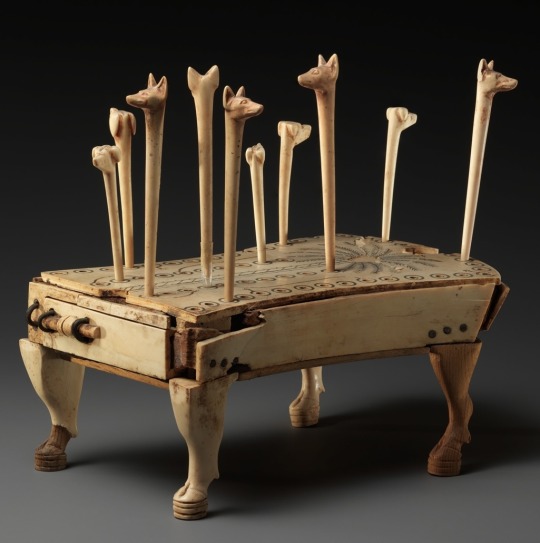
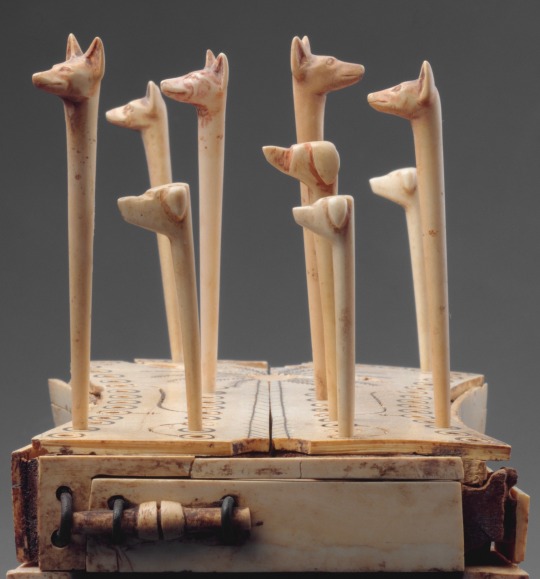
Egyptian
Game of Hounds and Jackals
Middle Kingdom, ca. 1814-1805 B.C.E.
#egyptian art#ancient egypt#ancient art#hounds and jackals#ancient history#artifact#antiquities#ancient people#ancient culture#egyptian history#egyptian culture#board games#chess#aesthetic#beauty#art history#aesthetictumblr#tumblraesthetic#tumblrpic#tumblrpictures#tumblr art#tumblrstyle#artists on tumblr#ancient artifacts
4K notes
·
View notes
Text
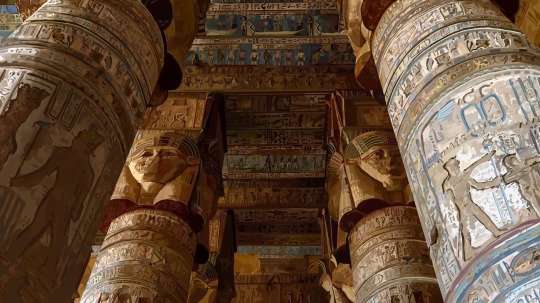
I know this isn't ninjago guys but I finished this 17 hour painting for my art class and I was proud of it so...enjoy.
I love Egypt fun fact about me. :)
#my art#art#egypt#egyptian#egyptology#egyptian art#ancient egypt#antiquity#ancient art#ancient egyptian#painting#digital painting
2K notes
·
View notes
Text

Mummy portrait (wax encaustic on sycamore wood) of a girl, from the Fayum region of Egypt. Artist unknown; ca. 120-150 CE (reign of Hadrian or Antoninus Pius). Now in the Liebieghaus, Frankfurt am Main, Germany. Photo credit: Carole Raddato.
#history#ancient history#Ancient Egypt#Roman Empire#Roman Egypt#art#art history#ancient art#Roman art#Egyptian art#Romano-Egyptian art#mummy portrait#encaustic painting#Liebieghaus
2K notes
·
View notes
Text
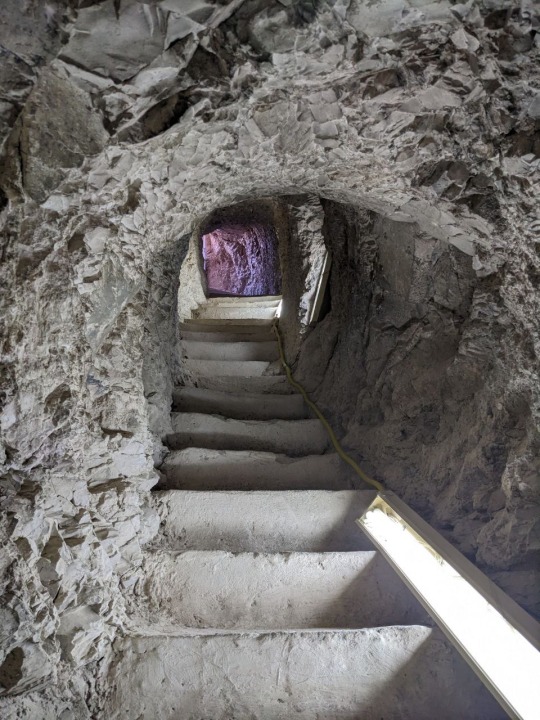
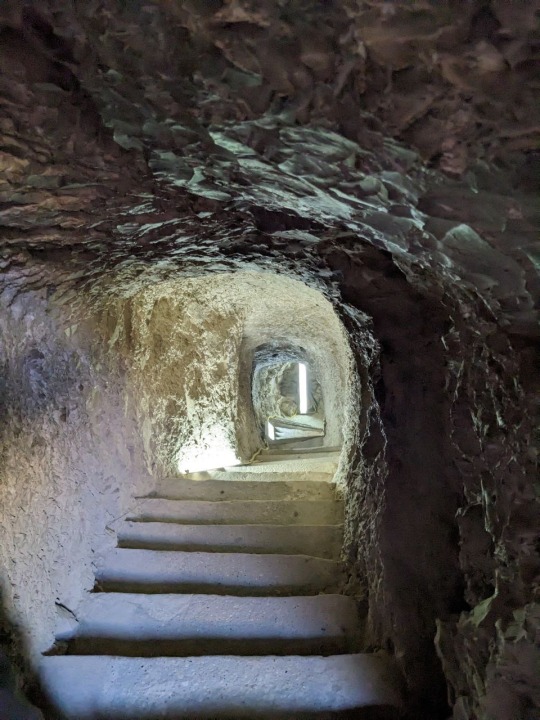

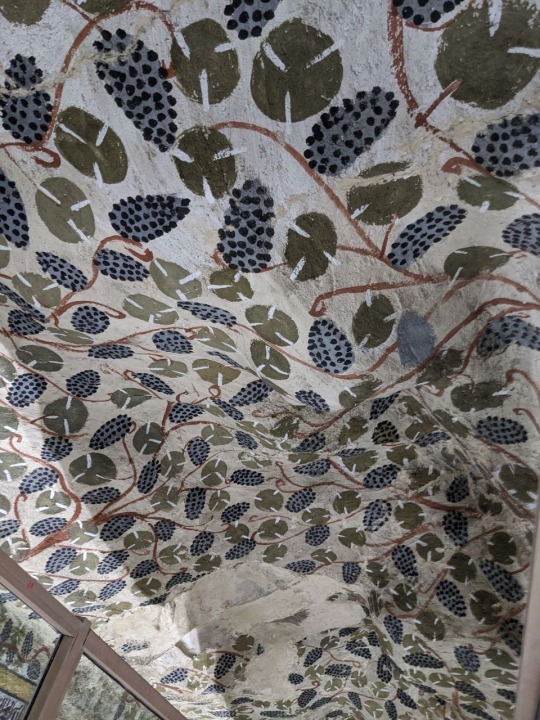


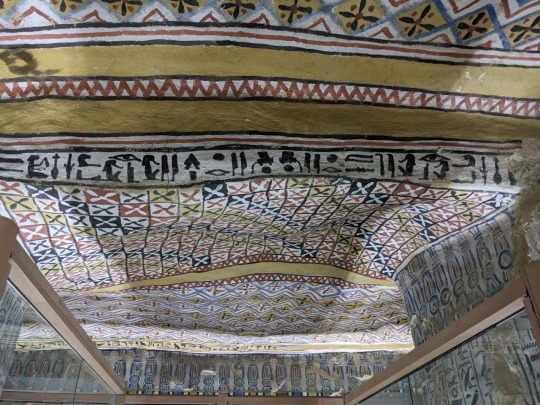
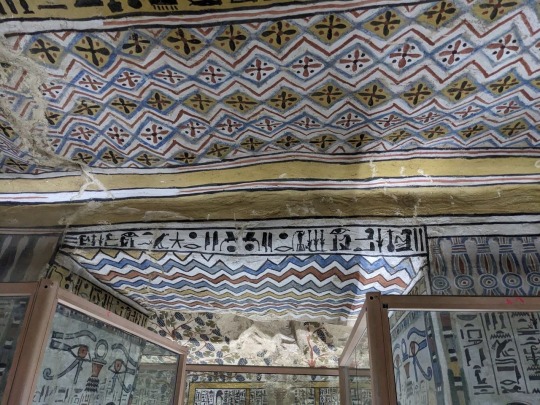
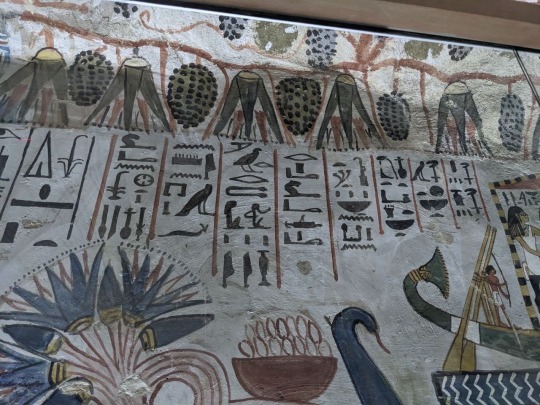

Ceiling and imagery of the Tomb of the Vineyards, burial of Sennefer, Mayor of the Southern City, Thebes, during the 18th dynasty of Egypt.
Photos taken by me, August 2023
It’s hard to tell which way is up and down when walking through the tunnel leading from the surface into the tomb. Before entering the main chamber there is a small antechamber whose ceiling is quite low, and then a shallow arch which leads to the main room depicted in the above photographs. Both chambers contain a good deal of paintings, however the main chamber holds the most numerous and well preserved paintings, of course. Besides the ceiling, everything is encased in glass.
#ancient egypt#egyptian mythology#egyptian hieroglyphs#egyptian art#ancient history#egyptian gods#egyptology#hieroglyphs#archaeology#egyptian history#egypt
2K notes
·
View notes
Text
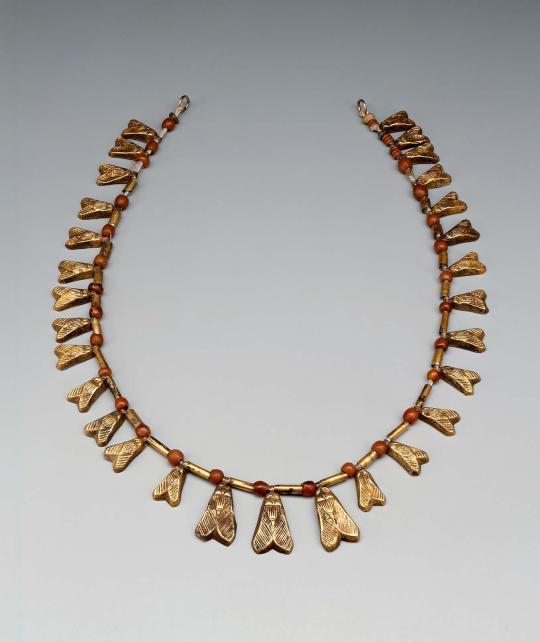
Necklace of fly beads, Egyptian, New Kingdom, Dynasty 18, 1550–1295 B.C., part of the MFA Boston collection
Fly ornament necklaces, occasionally presented to courageous soldiers, may have been worn as talismans to ward off insects.
2K notes
·
View notes
Text

Essam Marouf (Egyptian, 1958) - EM 02 (2023)
366 notes
·
View notes
Photo

This particular palette depicts the goddess Hathor, who is represented in the form of a cow. Stars can be seen around her head of her, displaying her cosmological significance of her. There is a hole to hang the palette.
Photo credit© Sandro Vannini / Bridgeman Images
Predynastic Period Egyptian
Egyptian Museum Cairo
2K notes
·
View notes
Text


Amethyst figurine of the goddess Taweret, Egypt, 18th Dynasty, 1500-1392 BC
from Phoenix Ancient Art
1K notes
·
View notes
Text
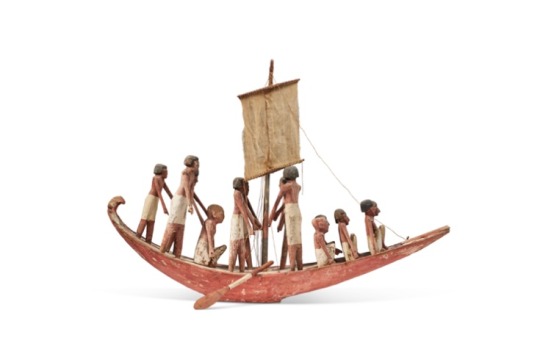

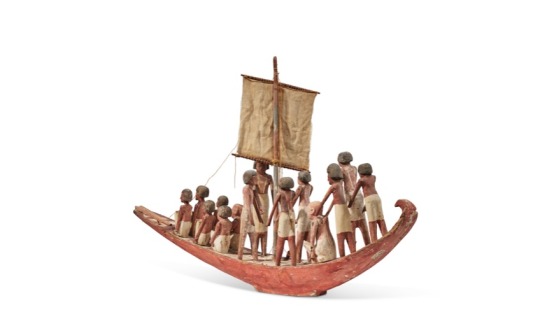
AN EGYPTIAN GESSO-PAINTED WOOD FUNERARY MODEL OF A BOAT
MIDDLE KINGDOM, 11TH-12TH DYNASTY, 2087-1759 B.C.
#AN EGYPTIAN GESSO-PAINTED WOOD FUNERARY MODEL OF A BOAT#MIDDLE KINGDOM#11TH-12TH DYNASTY#2087-1759 B.C.#ancient artifacts#archeology#archeolgst#history#history news#ancient history#ancient culture#ancient civilizations#ancient egypt#egyptian history#egyptian mythology#egyptian art
407 notes
·
View notes
Text
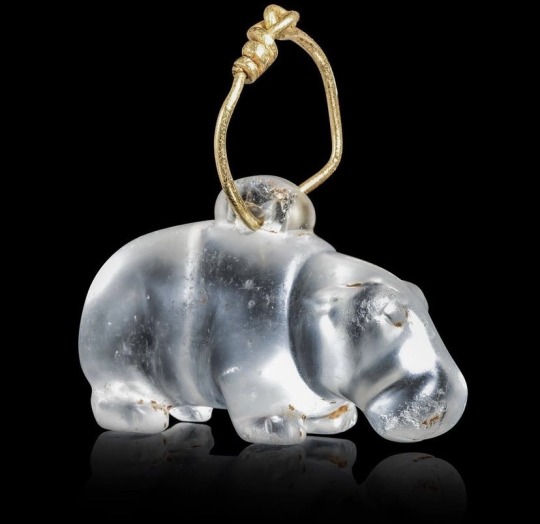
An Egyptian rock crystal of a chonky hinpopotamus amulet
(Middle Kingdom, ca. 2050-1650 BCE)
Amulets were worn by ancient Egyptians for their protective and regenative properties. Used in both in daily life and during funerary rites, amulets represented animals, deities, symbols or objects thought to possess the magical powers of warding off evil spirits.
As animals were popular representations, the hippopotamus was known for its apotropaic (e.g. ability to avert bad luck) qualities and was associated with rebirth.
#art#archaeology#sculpture#ancient#ancient art#ancient egypt#amulet#hippopotamus#apotropaic#egyptian art#egyptology#kemetic#ancient kemet#rock crystal#geology#ancient jewelry#jewelry
3K notes
·
View notes
Text
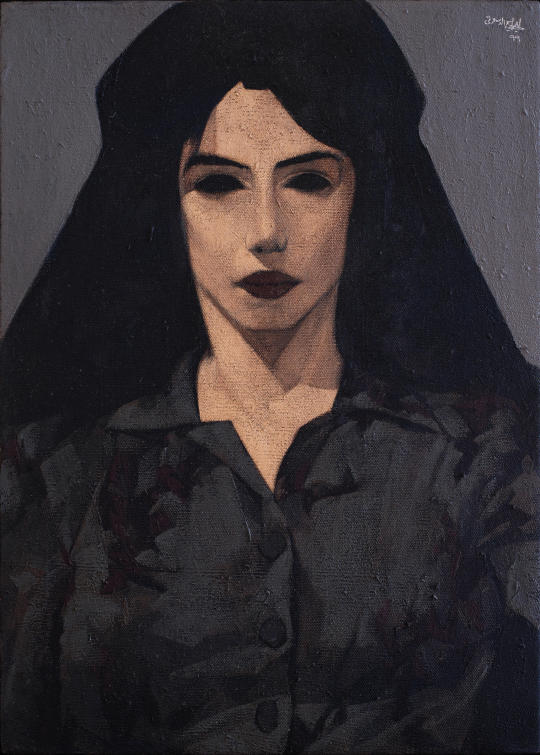
Ibrahim El Dessouki (Egyptian, 1969), Portrait of Hend Adnan, 1999. Oil on canvas, 50 x 35 cm.
Hend Adnan (b. 1970) is an Egyptian artist
311 notes
·
View notes
Text


Egyptian
Sphinx of Amenhotep IlI, (possibly from a Model of a Temple)
New Kingdom, ca. 1390-1352 B.C.E.
#egypt#egyptian art#egyptian history#sphinx#ancient art#ancient egypt#ancient history#ancient people#artifacts#antiquities#ancient culture#ancient aesthetic#aesthetic#beauty#statue#art history#aesthetictumblr#tumblraesthetic#tumblrpic#tumblrpictures#tumblr art#tumblrstyle#artists on tumblr
829 notes
·
View notes
Text
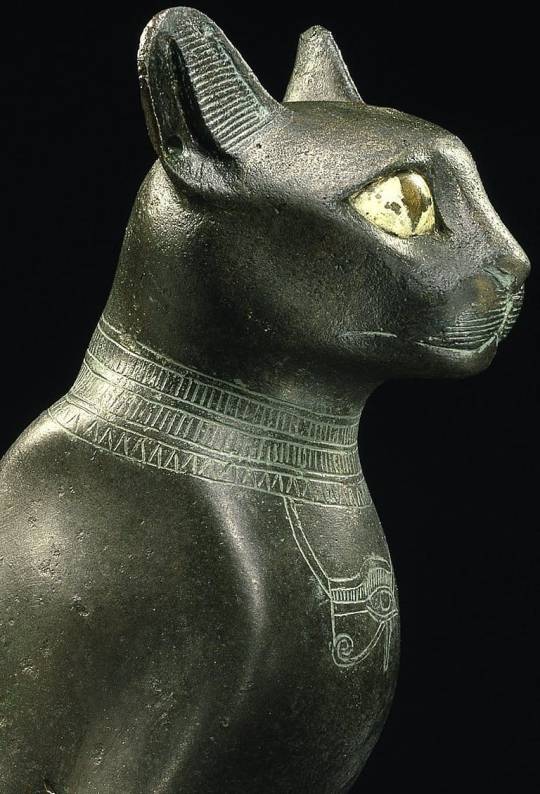
Egyptian goddess Bastet, 600 a.C.
Neues Museum-Berlín.
182 notes
·
View notes
Text
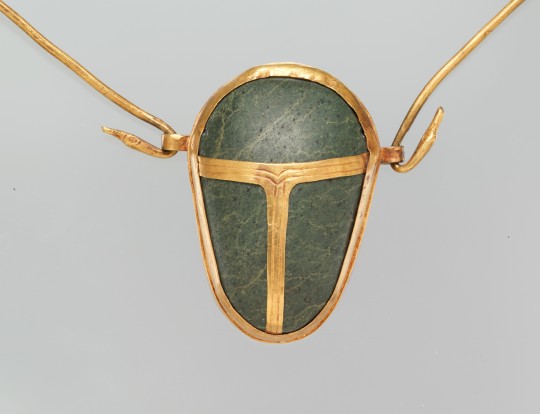
Ancient Egyptian heart amulet (gold and green schist) of one Manhata. Artist unknown; ca. 1479-1425 BCE (reign of Thutmose III, 18th Dynasty, New Kingdom). From the Tomb of the Three Foreign Wives of Thutmose III at Wadi Gabbanat el-Qurud, Thebes; now in the Metropolitan Museum of Art.
#art#art history#ancient art#Egypt#Ancient Egypt#Egyptian art#Ancient Egyptian art#Egyptian religion#Ancient Egyptian religion#kemetic#Thutmose III#18th Dynasty#New Kingdom#jewelry#jewellery#pendant#amulet#metalwork#gold#goldwork#schist#Egyptian Thebes#Metropolitan Museum of Art
684 notes
·
View notes